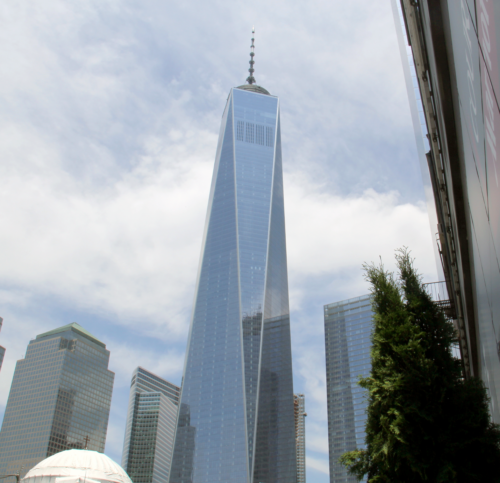The Billion Oyster Conference and New York City: Part 1
Jamie Currie ·Several weeks ago, I attended a symposium for the Billion Oyster Project with Dr. Judy O’Neil. This marked my first time in New York City and my first oyster conference.
On the day of the symposium, Judy and I walked to the ferry terminal, located in the Battery Maritime Building. My first thought was how pungently it smelled like a city. I grew up in the country, so I’m used to the earthy scent of woods and fields. It was impossible for me to ignore New York’s tang of humanity, perfumed with the scents of asphalt, cooking grease, rubber, smoke, and a hundred other aromas swirling around us. The New York skyline – row upon row of colossal skyscrapers – glittered in the sun. I wondered what the first settlers of New York Harbor would think if they could see it now: the forests and marsh now petrified into a great concrete jungle.

Given how urbanized it is, it’s ironic that New York City was originally built on the back of one of the earth’s richest ecosystems. When explorers such as Captain Henry Hudson first entered the harbor, they discovered some of the most productive and largest oyster beds ever seen. It is said that the harbor boasted 220,000 acres, or nearly 350 square miles, of oyster reefs. Over time people swarmed into the area, drawn by its natural riches. Settlers tore out the oysters, knocked down the reefs and dredged their remains until they had consumed every last oyster. They poured sewage and industrial waste into the harbor, cut down forests and rebuilt the landscape to create the Big Apple. The water became so toxic that people say even the ship-boring worms died.
With the passage of the Clean Water Act of 1972, the New York harbor has slowly returned to life. But the oysters never came back. Because they are an important water filter and keystone species, the harbor cannot fully recover without them. In response, the billion oyster project was launched. Its intent is to seed the bottom of the harbor with oysters, supplied in part by our hatchery partners at Horn Point Lab. The Billion Oyster Project hopes to reach a population of one billion oysters in New York Harbor by 2035.

The symposium itself took place on Governors Island, which overlooks downtown Manhattan and New York Harbor. After spending some time exploring the city (which I will write about in an upcoming blog), Judy and I took the ferry out to the island and set up a table downstairs in the Harbor School Building. As with previous years, we ran a display where students could create their own conceptual diagrams of New York Harbor using IAN (Integration and Application Network) symbols to show how the harbor would look in healthy versus unhealthy conditions.

The students could choose and embed stressors such as nitrogen, phosphorous, and sewage in the diagram and predict how those stressors would affect the harbor. The students (who were a mix of elementary schoolers, middle schoolers, and high schoolers) seemed to have a very good understanding of how the environment works; across the board, they designed healthy harbors with fewer stressors. These versions of New York Harbor had improved fisheries, water recreation, and biodiversity. When younger students practiced the diagram, their harbor diagrams also boasted dolphins the size of skyscrapers.

During our lunch break, I took a walk around the building and saw a wide variety of activities offered to the students – everything from knot-tying courses to a ‘build your own Remote Underwater Vehicle’ (ROV) session. There were also many student presentations offering solutions to various environmental problems in the bay.

My favorite part of the symposium was definitely my interactions with the students. These kids had always lived in an urbanized New York. They had no existing frame of reference to tell them that their city had ever been anything other than a city. But despite this, they were learning in school about how New York Harbor used to look, and what was lost in the short span of a few human lifetimes. These kids exemplified the benefits of having good science communication in schools – they were engaged, had a working understanding of science and the environment around them, and were a lot of fun to teach. It was great to see so many young and enthusiastic minds already working on tackling the world’s environmental issues. If the rest of these students are similarly determined and engaged, then it might just be possible that our future is in good hands.
